Trials - Portfolio
6S
6S
Scandinavian Starch for Severe Sepsis/Septic Shock Trial
Fluid is the mainstay treatment in sepsis resuscitation, but the effects of different crystalloid and colloid solutions on outcome remain unknown.
Previously, a high molecular weight hydroxyethyl starch, HES 200, was used, but this was found to cause acute kidney failure in patients with severe sepsis. As kidney failure is an independent risk factor for death in these patients, HES 200 is not used anymore. In stead a lower molecular weight starch, HES 130, has been developed. Presently, this is the preferred colloid in Scandinavian intensive care units (ICU), but the effects of HES 130 in ICU patients are currently unknown. The proposed Scandinavian multicentre study will be conducted to assess if HES 130 contributes to acute kidney failure in patients with severe sepsis. As HES 130 is widely used, the trial will provide important safety data to clinicians who resuscitate septic patients.
Population: adult | Intervention type: therapeutic medicinal product
Publications
ADIPOA2
ADIPOA2
Autologous Adipose-Derived Mesenchymal Stromal Cells in the Treatment of Mild to Moderate Osteoarthritis

A phase IIb, prospective, multicentre, double-blind, triplearm, randomized versus placebo trial, to assess the efficacy of a single injection of either 2 or 10 x 106 autologous adipose derived mesenchymal stromal cells (ASC) in the treatment of mild to moderate osteoarthritis (OA) of the knee, active and unresponsive to conservative therapy for at least 12 months.
Population: adult | Intervention type: therapeutic medicinal product
AETIONOMY
AETIONOMY
Taxonomy of Neurodegenerative Diseases: Observational Study in Alzheimer's Disease and Parkinson's Disease

This study aims to validate the mechanism-based taxonomies of Alzheimer's Disease and Parkinson's Disease generated by the AETIONOMY Innovative Medicines Initiative (IMI) project for two biomarkers for Alzheimer's Disease and two biomarkers for Parkinson's Disease.
Population: adult
ALCHEMIST
ALCHEMIST
ALdosterone antagonist Chronic HEModialysis Interventional Survival Trial
This study is designed to establish the effects of spironolactone in comparison to placebo on the composite endpoint of nonfatal Myocardial Infarction (MI) and acute coronary syndrome, hospitalization for heart failure, nonfatal stroke or cardiovascular-induced death. The primary endpoint will be the time to onset of the first incident.
Population: adult
APPEAL
Antivirus Pandemic Preparedness EuropeAn pLatform
Prepared for the next virus pandemic: The APPEAL project
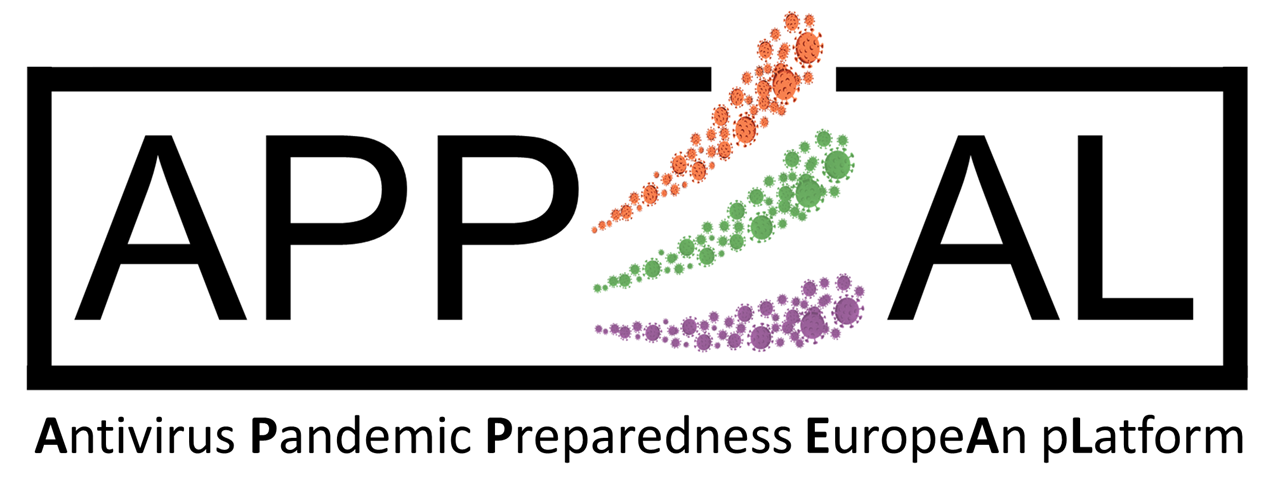
In collaboration with 13 partners from 7 countries, Jena University Hospital is establishing the Antivirus Pandemic Preparedness EuropeAn pLatform (APPEAL), a European research initiative aimed at enhancing preparedness for future pandemics. This EU funded collaboration will establish a comprehensive program for the development of broad-spectrum antiviral drugs within a five year time frame ensuring drug affordability and accessibility to low income countries.
This research initiative aims to establish a platform for the identification of target proteins and their signalling pathways within host cells, utilising both computational and experimental approaches. Subsequently, potential drug candidates will undergo comprehensive testing in our laboratories, including cell culture and human-relevant 3D models. The most promising candidates will then advance to animal studies, and ultimately, validation in a clinical pilot study. The goal is to establish a comprehensive pipeline for the identification and validation of potential antiviral targets and associated drug candidates.
In addition, the scientists also aim to therapeutically activate target proteins that are identified as enhancers of cellular defence processes. For the most promising candidate, the safety and effectiveness of the lead compound will be evaluated in pre-clinical pilot studies.
Population: adult | Intervention type: Interventional Study
AUSTRAL
AUSTRAL trial: An open-label, multicenter, phase II study of radiotherapy followed by durvalumab (MEDI4736) and ceralasertib (AZD6738) in stage III NSCLC patients with thoracic relapses +/- oligometastases after PACIFIC regimen.
AUSTRAL trial: An open-label, multicenter, phase II study of radiotherapy followed by durvalumab (MEDI4736) and ceralasertib (AZD6738) in stage III NSCLC patients with thoracic relapses +/- oligometastases after PACIFIC regimen.
Non-small cell lung cancer is a leading cause of death for cancer worldwide. Approximately 30% of patients have stage III locally advanced disease at diagnosis.
Standard treatment for patients for whom surgical resection is not feasible is chemoradiotherapy with platinum-based doublet chemotherapy followed by durvalumab maintenance, which has a survival rate of roughly 50% and a significant percentage of patients encounter disease progression within two years from the onset of maintenance treatment. After the first disease progression, treatment options are limited.
To address this situation, the AUSTRAL trial aims to explore the safety and efficacy of thoracic re-irradiation of oligometastases followed after an interval of 2 to 4 weeks by durvalumab and ceralasertib in patients with thoracic relapses +/- oligometastases after chemoradiotherapy with platinum-based doublet chemotherapy treatment followed by durvalumab maintenance.
Two primary objectives on safety and efficacy have been set and will be hierarchically analysed.
Primary objective:
- To assess the safety and tolerability, in terms of number of grade 3 or higher adverse events judged as at least possibly related to study treatment regimen (radiotherapy followed by systemic therapy with ceralasertib and durvalumab) within 6 months from the start of study treatment.
- To assess the efficacy in terms of Progression Free Survival (PFS), defined as the time from the date of enrolment until the date of first disease progression or death to any cause, whichever comes first.
Secondary objectives:
- To assess the activity in terms of objective response rate (ORR).
- To assess the efficacy in terms of PFS rate at 6 and 12 months, Overall Survival (OS), OS rate at 6 and 12 months. OS is defined as the time from enrolment until the date of death from any cause.
- To assess the safety and tolerability of the treatment. Adverse events will be encoded and graded using NCI-CTCAE version 5.0.
To assess the efficacy in terms of Progression Free Survival (PFS), defined as the time from the date of enrolment until the date of first disease progression or death to any cause, whichever comes first.
Population: Adult (male or female aged 18 years or older).
Number of Patients: 21 evaluable patients.
Study Population: Stage III NSCLC patients with loco-regional relapse > 12 months from the end of CRT +/- < 3 metastatic lesions after PACIFIC regimen or PACIFIC-like regimens (concurrent or sequential chemo-radiotherapy followed by maintenance durvalumab), regardless of PD-L1 status, but without EGFR, HER-2 or MET exon14 skipping mutations, ALK, ROS1, RET or NTRK rearrangements.
Intervention type: Interventional Study.
BETA3 LVH
BETA3 LVH
A multi-centre randomized, placebo-controlled trial of mirabegron, a new beta3-adrenergic receptor agonist on the progression of left ventricular mass and diastolic function in patients with structural heart disease

Prospective, randomized, placebo-controlled, multi-centric international phase IIb clinical trial. The target population consists of patients with cardiac structural remodelling with or without symptoms of heart failure (maximum NYHA II). The objective is to evaluate mirabegron (a new β3-specific agonist) over 12 months as add-on to standard treatment compared to standard treatment alone. Endpoints focus on cardiac remodelling: Quantitative indices of hypertrophy and left ventricle (LV) function, in addition exercise tolerance is investigated.
Population: adult | Intervention type: therapeutic medicinal product
Publications
BIO-RAIDs
BIO-RAIDs
Biomarker Evaluation in Advanced Stage Cervical Cancer by an International Working Group. Tumor Stages (1B1 - 4)
Prospective Multicentric European trial for Cervical cancer, not previously treated, with tumour biopsies, and blood collection for molecular analysis at predetermined time points.
Population: adult
BIOCHIP
BIOCHIP
Clinical Trial for the Regeneration of Cartilage Lesions in the Knee (NosetoKnee2)

The purpose of this study is to investigate the efficacy of an engineered cartilage transplant (N-TEC) in comparison to a cell-activated matrix (N-CAM) for the treatment of articular cartilage lesions in the knee. The main innovations in this trial are the use of nasal chondrocytes and the implantation of a tissue in contrast to cells seeded on a matrix. The goals of the trial are to: (i) evaluate whether implantation of a more mature graft (tissue therapy) is beneficial for the quality and durability of the repair tissue and the clinical outcome, (ii) determine the potential of the mature graft to integrate with the adjacent cartilage and form hyaline repair tissue and (iii) assess the efficacy of each treatment in correlation to the characteristics of the defect (e.g. acute versus chronic setting).
Population: adult | Intervention type: therapeutic medicinal product
BIOTOOL-CHF
BIOmarker based diagnostic TOOLkit to personalize pharmacological approaches in congestive heart failure

Heart failure (HF) is a chronic clinical condition involving up to 6.5 million people in Europe, the most frequent cause of hospitalization in adults with a 5-year mortality rate up to 70%. Several drugs positively modify the course of disease in the patients with HF with reduced ejection fraction (HFrEF), with a high level of evidence. Besides, the use of diuretics, the basic cornerstone of symptoms relief in HFrEF by targeting congestion, is supported by poor and outdated evidence. Congestion drives symptoms worsening leading to hospital admission. Clinical evaluation of congestion is often inaccurate and insensitive to detect interstitial or intravascular fluid overload, and thus insufficient to guide use of diuretics. Indeed, their use is inefficient, with studies showing that up to 70% of patients with chronic HFrEF show congestion despite diuretic therapy, the use of diuretics does prevent clinical events in patients discharged after an acute heart failure episode, and diuretics may represent a barrier to adherence to disease modifier therapies. An appropriate management of diuretic therapy is therefore crucial to overcome the risk of re-hospitalisation, manage patients symptoms, and achieve target guideline-directed medical therapy. To fill these gaps, BIOTOOL-CHF will 1) validate a set of qualified biomarkers estimating congestion, 2) define a multiparametric artificial intelligence-based score predicting congestion and prognosis, 3) develop a decision-making tool to manage congestion by diuretics, 4) develop a Point of Care companion diagnostic (CD) to assess biomarkers concentrations 5) set up a Strategy plan for industrial development and market access of the CD. This approach will support the definition of a framework to regulatory agencies and scientific societies to disseminate recommendations for a more efficient use of existing pharmaceuticals and allow a personalised strategy for the management of HFrEF, by using new tools and digital solutions.
Population: adult | Intervention type: Non-interventional
CABA-HFPEF
CABA-HFPEF
CAtheter-Based Ablation of atrial fibrillation compared to conventional treatment in patients with Heart Failure with Preserved Ejection Fraction

The objective of the study is to assess whether catheter ablation (CA) for atrial fibrillation (AF) can prevent adverse cardiovascular (CV) outcomes in patients with heart failure (HF) with preserved or mildly reduced ejection fraction.
It used to be assumed that atrial fibrillation could cause heart failure, a condition known as tachycardiomyopathy. Today, it is known that the reverse can also occur, namely that heart failure triggers atrial fibrillation. The often rapid and irregular heartbeat that then occurs, in turn worsens the heart failure - a vicious circle begins. To counteract this dangerous combination of heart failure and atrial fibrillation, DZHK scientists are investigating in the CABA-HFPEF-DZHK27 study whether treatment of atrial fibrillation by so-called catheter ablation helps heart failure patients and has a positive effect on their state of health and prognosis. The study focuses on heart failure patients with preserved or only mildly reduced ejection fraction (Heart Failure with Preserved Ejection Fraction, HFPEF, and Heart Failure with mildly reduced Ejection Fraction, HFmrEF).
CABA-HFPEF-DZHK27 is now the first large, multicenter study to investigate this relationship. Across Europe, 60 centers are participating, and 1,550 patients with predefined inclusion and exclusion criteria are expected to participate through the centers. The study is designed to last five years.
Population: adult | Intervention type: therapeutic medical device
CAPP3
CAPP3
Finding the Best Dose of Aspirin to Prevent Lynch Syndrome Cancers (CaPP3 Israel)

A randomised double blind dose non-inferiority trial of a daily dose of 600mg versus 300mg versus 100mg of enteric coated aspirin as a cancer preventive in carriers of a germline pathological mismatch repair gene defect, Lynch Syndrome. Project 3 in the Cancer Prevention Programme (CaPP3).
Population: adult | Intervention type: therapeutic medicinal product
CARDIA
CARDIA
Surgery for adenocarcinoma of the gastroesophageal junction (GEJ) type II: Transthoracic esophagectomy vs. transhiatal extended gastrectomy
CARDIA is designed as non-IMP/non-MD clinical trial. The aim of the study is to compare the outcome of transhiatal extended gastrectomy with transthoracic esophagectomy as curative surgical therapy for patients with GEJ type II adenocarcinomas since nowadays both surgical strategies are in use with ambivalent results regarding oncological outcome, postoperative morbidity, and quality of life.
Population: adult | Intervention type: therapeutic procedural
ChildInnovac
ChildInnovac
First Adult Safety Trial on Nasal Live Attenuated B. Pertussis Vaccine
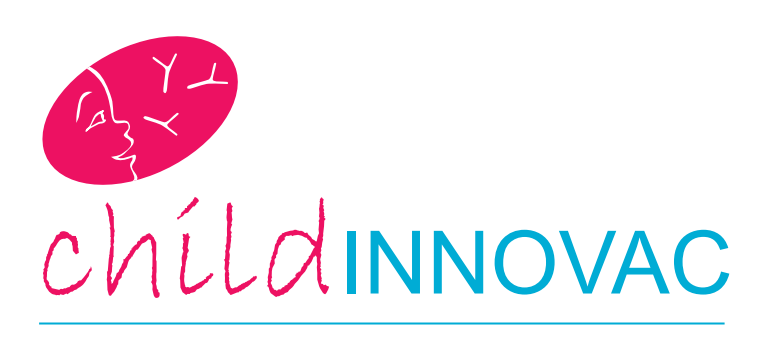
The purpose of this study is to evaluate the safety and immunogenicity of a new live attenuated vaccine against whooping-cough. It is a phase1, single centre, dose-escalating, placebo-controlled study on a genetically modified B. pertussis strain given as a single intranasal dose to healthy adult male volunteers.
Effective vaccines are needed to protect young infants (from 0 to 6 months, today the most vulnerable age group), preferably after a single administration very early in life. The successful outcome of this project would constitute an important milestone towards nasal vaccination of infants, possibly at birth with a novel, single-dose pertussis vaccine. Our ultimate aim is to protect infants in the most vulnerable age group, before the regular vaccination schedule using already available vaccines is applied. The ultimate aim is thus not to replace current vaccination schedules with available vaccines, but to add a first nasal vaccination to protect very early in life.
Population: adult | Intervention type: vaccine
DISCHARGE
DISCHARGE
Diagnostic Imaging Strategies for Patients with Stable Chest Pain and Intermediate Risk of Coronary Artery Disease: Comparative Effectiveness Research of Existing Technologies
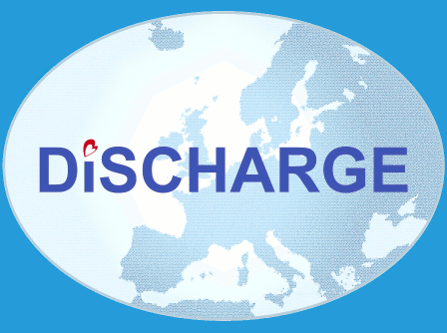
This is a pragmatic randomised controlled trial (PRCT) evaluating the superiority of CT over ICA concerning effectiveness in stable chest pain patients with intermediate pretest probability of coronary artery disease.
Population: adult
Publications
DisCoVeRy
DisCoVeRy
Multi-centre, adaptive, randomized trial of the safety and efficacy of treatments of COVID-19 in hospitalized adults
This study is an adaptive, randomized, open clinical trial to evaluate the safety and efficacy of possible therapeutic agents in hospitalized adult patients diagnosed with COVID-19.
The study will compare different investigational therapeutic agents to a control group managed with the Standard of Care (SoC). There will be interim monitoring to allow early stopping for futility, efficacy, or safety and to introduce new therapies as they become available. If one therapy proves to be superior to others in the trial, this treatment will then become part of the SoC arm for comparison(s) with new experimental treatment(s).
This protocol, therefore, describes a randomised trial among adults (≥18) hospitalised for COVID-19 that randomly allocates them between the 2 arms (since June 29 2020): Standard of Care (SoC) alone versus SoC + remdesivir. Other arms can be added as evidence emerges from other candidate therapeutics.
Population: adult | Intervention type: therapeutic medicinal product
Publications
EORTC 40091 (BOS2)
EORTC 40091 (BOS2)
Efficacy of FOLFOX Alone, FOLFOX Plus Bevacizumab and FOLFOX Plus Panitumumab in Patients With Resectable Liver Metastases (BOS2)
Patients presenting with multiple innumerable liver metastases will probably never come to resection, however, for all others, including patients with numerous multiple metastases or large metastases,resection should be considered after limited chemotherapy.
There is consensus for a backbone chemotherapy consisting of fluoropyrimidine + oxaliplatin. FOLFOX was used in the previous EORTC study and is again recommended.
The addition of targeted agents to standard chemotherapy in the perioperative strategy for mCRC might increase the ORR and R0 resectability, without significant increase in toxicity, therefore translating to a better outcome.
It was therefore decided to design an open label, randomized, multi-center, 3-arm late phase II study.
Arm A: (standard) mFOLFOX6 + Surgery Arm B: (experimental) mFOLFOX6 + Bevacizumab + Surgery Arm C: (experimental) mFOLFOX6 + Panitumumab + Surgery
Population: adult | Intervention type: therapeutic medicinal product
ESCALE
ESCALE
Efficacy Study of Antimicrobial Catheters to Avoid Urinary Infections in Spinal Cord Injured Patients
Antiseptic Silver Alloy-Coated Silicone Urinary Catheters seems to be a promising intervention to reduce urinary tract infections; however, research evidence cannot be extrapolated to spinal cord injured patients.
The study is an open, randomized, multicentric, and parallel clinical trial with blinded assessment. The study includes spinal cord injured patients who require at least seven days of urethral catheterization as a method of bladder voiding. Participants are on-line centrally randomized and allocated to one of the two interventions (Antiseptic Urinary Catheters or Conventional Catheters). Catheters are used for a maximum period of 30 days or removed earlier at the clinician criteria.
The main outcome is the incidence of urinary tract infections by the time of catheter removal or at day 30 after catheterization, the event that occurs first. Intention-to-treat analysis will be performed, as well as a primary analysis of all patients.
The aim of this study is to assess whether silver alloy-coated silicone urinary catheters reduce urinary infections in spinal cord injured patients.
Population: adult | Intervention type: therapeutic medical device
ETAPA
ETAPA
Randomised Placebo-Controlled Trial of Early Targeted Treatment of Patent Ductus Arteriosus with Paracetamol in Extremely Low Birth Weight Infants
The objective of the study is to determine whether, among extremely low birth weight (ELBW - birth weight less than 1000g) infants, early targeted treatment with Paracetamol for patent ductus arteriosus (PDA), based on specific criteria and commencing between six to twelve hours of life, results in significant reduction of a combined primary outcome of periventricular and intraventricular haemorrhage (PIVH), necrotising enterocolitis (NEC) and death before discharge. The Trial design is a Phase 3 randomised, parallel-group, placebo-controlled trial.
Analysis will be carried out as intention to treat. For the analysis of the primary end point a mixed-effects logistic regression model will be used. The fixed covariates will be the treatment group and weight as a continuous variable. The centre will be included in the model as a random intercept (i.e. fixed + random effects = mixed effects), which will adjust for centre-specific variance. By this approach a precision and statistical power will be gained (with potential ability to describe smaller, but significant effects). The trial statistician will prepare a Statistical Analysis Plan.
A sample size of 218 infants is needed with 109 infants in each arm, (using corrected chi-square test and Fischer’s Exact test), to decrease the rate of our combined outcome from 32% to 15% (17% absolute reduction), with alpha 5% and 80% power.
Population: paediatric | Intervention type: therapeutic procedural
EU-COVAT-1 AGED
EU-COVAT-1 AGED
A Multinational, Phase 2, Randomised, Adaptive Protocol to Evaluate Immunogenicity and Reactogenicity of Different COVID-19 Vaccines Administration in Older Adults (≥75) Already Vaccinated Against SARS-COV-2
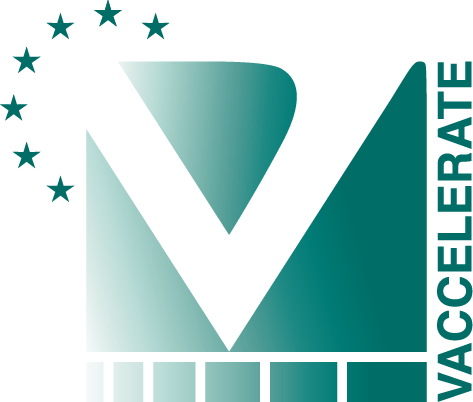
A randomised controlled, adaptive, multicentre Phase II protocol evaluating different booster strategies in individuals aged 75 years and older already vaccinated against SARS-CoV-2. Part B of this trial foresees testing of different vaccines as a 4th vaccination dose (second booster) for comparative assessment of their immunogenicity and safety against SARSCoV-2 wild-type and variants in the elderly, a usually neglected population.
Additional vaccines and extended follow-up visits can be added through amendments of this sub-protocol. As stated in the EU-COVAT master protocol, this trial, i.e., the EU-COVAT-1_AGED study, implements a specific safety monitoring strategy .
Population: adult | Intervention type: vaccine
EU-COVAT-2 BOOSTAVAC
EU-COVAT-2 BOOSTAVAC
An International Multicentre, Phase 2, Randomised, Adaptive Protocol to determine the safety, optimal timing of and humoral immune response after administering a 3rd homologous mRNA vaccination dose against SARS-CoV-2 in the general population (18+ years) already fully vaccinated against SARS-CoV-2

The overarching objective is to evaluate anti-SARS-CoV-2 immune responses to different booster strategies in individuals already vaccinated against SARS-CoV-2. Specifically, this subprotocol will determine the need for, optimal timing of and immunogenicity of administering a 4th homologous vaccination dose against SARS-CoV-2 in the general population (18+ years) who have already been vaccinated with three doses of the BNT162b2 vaccine.
Population: adult | Intervention type: vaccine
EU-SolidAct
EU-SolidAct
European DisCoVeRy for Solidarity: an Adaptive Pandemic and Emerging Infection Platform Trial.

The EU-SolidAct trial – European DisCoVeRy for Solidarity: An Adaptive Pandemic and Emerging Infection Platform Trial – is part of EU-RESPONSE, a pan-European research project involved with the rapid and coordinated investigation of medications to treat COVID-19 during the ongoing pandemic. The EU-SolidAct (EudraCT: 2021-000541-41; clinicaltrials.gov ID NCT04891133) is a multi-center, randomized, adaptive Phase 2 and 3 platform trial, the master protocol of which has been developed to evaluate potential treatments in hospitalised patients with COVID-19, the disease caused by the SARS-CoV2 virus (coronavirus). Under the trial, bemcentinib will be studied in up to 500 hospitalised COVID-19 patients. In support of the trial, BerGenBio will provide bemcentinib drug material and incremental funding of costs related to the bemcentinib sub-protocol.
The first drug studied under the EU-SolidAct platform was baricitinib, marketed by Eli Lilly and Company, and is now under market authorisation evaluation by the EMA (European Medicines Agency) for use in hospitalised COVID-19 patients. BerGenBio’s AXL inhibitor, bemcentinib, has been selected by an international expert group to be the second compound to be studied in the EU-SolidAct platform.
EU-SolidAct has established clinical sites in 15 countries. The trial is sponsored by Oslo University Hospital, Norway in collaboration with the Institut National de la Santé Et de la Recherche Médicale (Inserm), France and the not-for-profit intergovernmental organization European Clinical Research Infrastructure Network (ECRIN). The trial through the EU-RESPONSE project has received funding from the European Union’s Horizon 2020 research and innovation programme under grant agreement No 101015736. Individual patient-level data will be made as public as possible while maintaining the integrity and privacy of the trial participants.
Population: adult
Publications
EU-TRAIN (Cohort/RCT)
EU-TRAIN (Cohort/RCT)
Prospective cohort of kidney transplant patients

The EU-TRAIN project was formed by gathering reference kidney transplant centres in a fully operating European network including 12 partners. Our ambitious but realistic goals are: to provide clinicians with innovative and accessible tools for early prediction of individual risk of allograft rejection and transplant loss; to personalise clinical management and treatment and; to improve allograft outcomes.
This project will engineer a risk stratification system applied to kidney transplant patients by analysing the integration of several layers of data (clinical, histological, immunological data as well as gene expression and novel biomarkers) - the TRAnsplant Comprehensive Evaluator of Risk (EU-TRACER). EU-TRACER will be generated and validated in two dedicated studies including a randomised control trial.
Population: adult | Intervention type: non-interventional
EU-TRAIN IMPACT (EU-TRACER)
EU-TRAIN IMPACT (EU-TRACER)
Randomized Controlled Multicenter Trial to quantify the benefits of biomarkers in routine patient care in kidney transplant recipients

This randomized trial is based on the hypothesis that the combined use of (1) biomarkers including non‐invasive biomarkers in peripheral blood and urine predicting anti‐donor immunological activation or quiescence, and high/low risk clustering using the transcriptional changes in allograft tissue samples using gene expression assessment and (2) interactive and actionable data analytics delivered at the bedside will promote safe clinical follow‐up of kidney transplant patients without the need for invasive surveillance allograft biopsies to assess allograft rejection in clinically stable kidney transplant patients. We therefore propose a with/without, European, multicenter, prospective randomized and biomarker‐guided trial.
Population: adult | Intervention type: therapeutic medicinal product
EUROHYP-1
EUROHYP-1
Cooling Plus Best Medical Treatment Versus Best Medical Treatment Alone for Acute Ischaemic Stroke
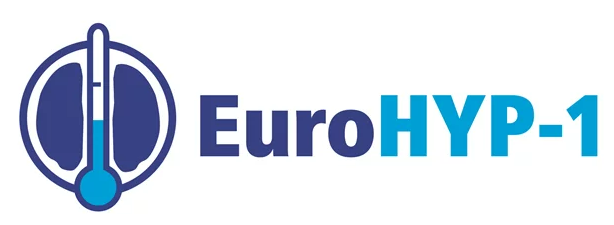
The purpose of this study is to determine if systemic cooling to a target temperature of 34 to 35°C, started within six hours of symptom onset and maintained for 24 hours, improves functional outcome at three months in patients with acute ischaemic stroke.
Population: adult | Intervention type: therapeutic medical device
Publications
FAIR-PARK II
FAIR-PARK II
Conservative Iron Chelation as a Disease-Modifying Strategy in Parkinson's Disease

This study evaluates the effect of iron chelation as a therapeutic strategy to slow the progression of Parkinson's disease. Half of participants will receive the deferiprone to 15 mg / kg twice daily morning and evening (30mg / kg per day), while the other half will receive a placebo. The treatment lasts nine months.
Population: adult | Intervention type: therapeutic medicinal product
Publications
HCQ4 Surfdefect
HCQ4 Surfdefect
Hydroxycholoroquine in paediatric ILD_START randomized controlled in-parallel group, then switch to placebo active drug, and STOP randomized controlled in-parallel group to evaluate the efficacy and safety of hydroxychloroquine (HCQ)
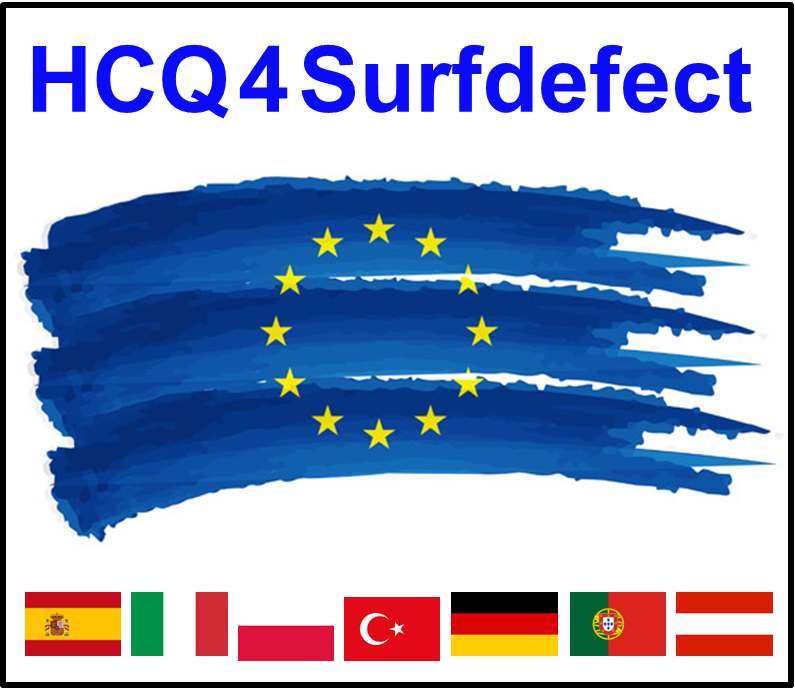
The surfactant dysfunction disorders are an important group of molecularly and histologically defined entities, belonging to the interstitial lung diseases in children (chILD). Mutations in genes encoding for surfactant protein C, surfactant protein B, the lipid transporter ABCA3, thyroid transcription factor 1 and others, cause a significant group of phenotypically similar chronic interstitial lung diseases with high morbidity and early mortality.
Unfortunately no successfully proven treatments are available. Beyond oxygen supplementation, nutritional support and immunizations, the small molecule hydroxychloroquine (HCQ) has been identified during decades of trial and error treatments for surfactant dysfunction disorders. Together with promising in vitro data, HCQ has the potential as an innovative lead compound for this group of diseases.
During a previous FP7 project ending 2016 the highest priority for further study in clinical trials was assigned to HCQ due to greatest patients´ needs, wide off-label usage, the results of a worldwide Delphi process and direct recommendation from the Committee for Orphan Medicinal Products (COMP) members. As part of that project the most suitable study design was developed.
This randomized phase 2b double blind clinical study of HCQ in patients with surfactant dysfunction disorders has a design which allows a flexible beginning, either the initiation or the withdrawal of HCQ. The primary objective is to investigate if HCQ improves the oxygenation compared to placebo in a group of 60 well defined subjects with surfactant dysfunction disorders. Secondary objectives of the project will generate important knowledge on patient reported outcomes, health economics and other parameters.
Intervention type: therapeutic medicinal product
HIVACAR
HIVACAR
A phase I/IIa, randomized study to evaluate the safety and the effectiveness of a Combination of Therapeutic Vaccine, the Broadly Neutralizing Antibody and 10-1074 and the Latency Reversing Agent Romidepsin to Achieve a Functional Cure of HIV in chronically HIV-infected Participants Under Stable Combined Antiretroviral Therapy.
The main goal of HIVACAR is to change the current paradigm of HIV treatment by obtaining a functional cure for HIV (i.e., control of viral load to levels below the threshold of 50 copies/ml and maintenance of high CD4+ T-cell count after discontinuation of antiretroviral therapy) thanks to effectively targeting residual virus replication and viral reservoirs. In order to do so, the planned novel strategy is to successfully combine immune-based therapies, including therapeutic vaccines and broadly neutralizing antibodies with latency reversing agents, in a proof-of-concept phase IIa clinical trial.
The HIVACAR project will lead to a reduction of the actual costs related to HIV treatment and management and of the social public health as well as an improvement in the patients’ quality of life. HIVACAR has been conceived under the framework of responsible research and innovation, so patients and other stakeholders will have a key role from the inception of the project until obtaining the results. Patients will be perfectly aware of how this therapy has been conceived and the real impact and change in their actual quality of life, as well as how the clinical trial has been designed and the consequences of participating in it. In addition, patients (and the general population) will tailor the project and its results dissemination and communication. This patient engagement will not be limited to the clinical trial but also to the rest of the activities of the project, so patients and the general society will be aware of how the research is developed and can include the patients’ point of view in the research activities. In addition, the socio-economic and psycho-social impact of the new treatment will be also analysed so overwhelming data on the benefits and impact of the new treatment will be obtained and shown to all stakeholders.
Population: adult | Intervention type: therapeutic medicinal product
IDEA-FAST
IDEA-FAST
Identifying Digital Endpoints to Assess FAtigue, Sleep and acTivities daily living in Neurodegenerative disorders and Immune-mediated inflammatory diseases
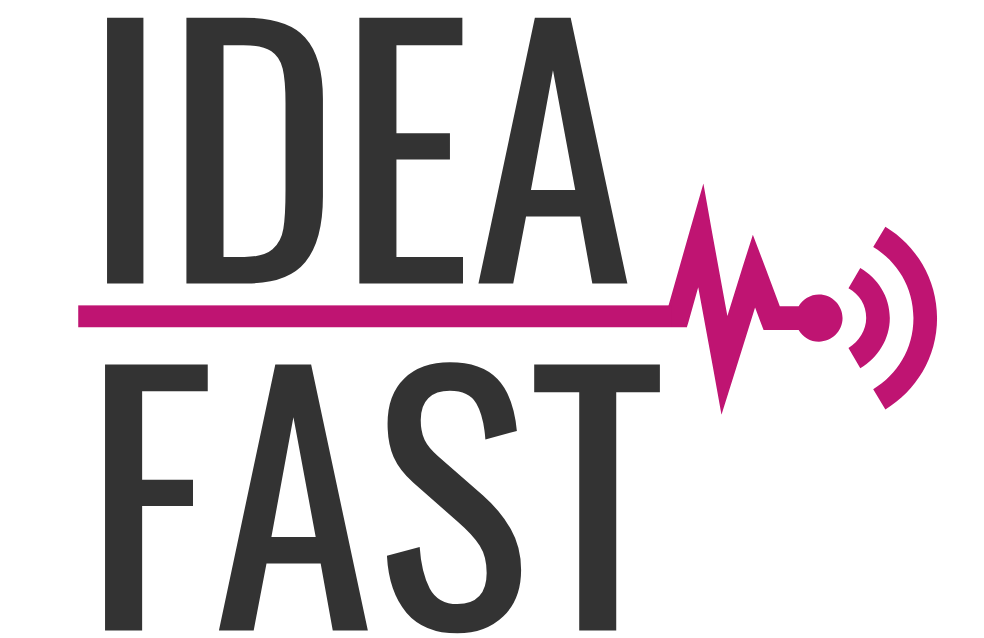
The study will be a multi-national, multi-centre longitudinal observational study with the aim to evaluate the performance of the candidate digital endpoints of fatigue and sleep disturbance in the following neurodegenerative disorders (Parkinson’s disease and Huntington’s disease) and immune-mediated inflammatory diseases (Inflammatory bowel disease, rheumatoid arthritis, systemic lupus erythematosus and primary Sjögren’s syndrome). Healthy volunteers without symptoms of chronic fatigue or sleep disturbance will also be include as a comparative group.
Population: adult | Intervention type: therapeutic medical device
ImmunAID
ImmunAID
Immunome project consortium for AutoInflammatory Disorders
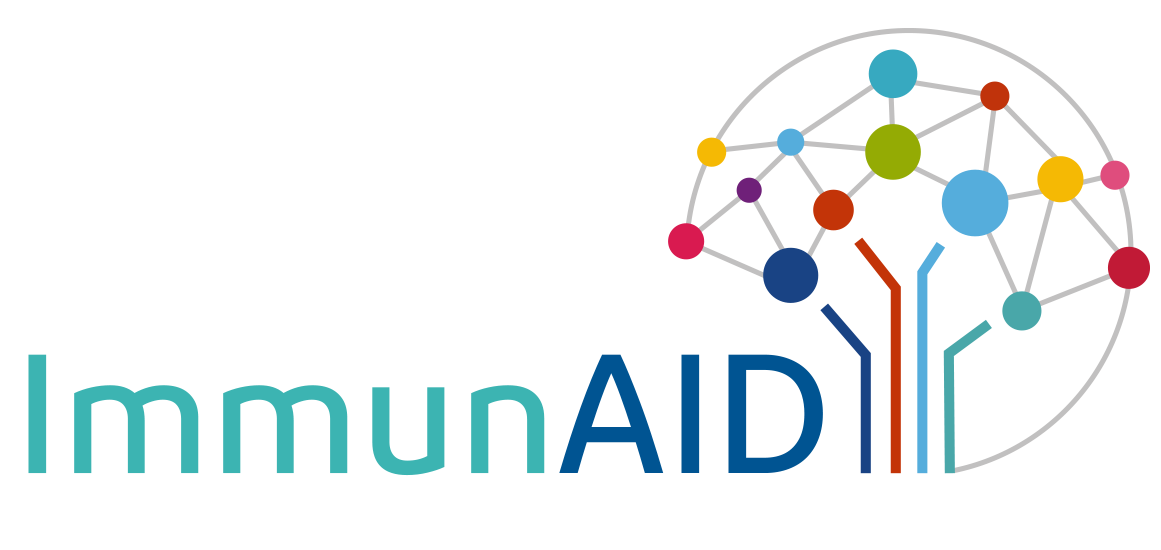
ImmunAID is seeking to enable a rapid and accurate diagnosis across all the spectrum of SAID, in order to improve clinical management of SAID patients, through a graded approach:
- Identification and validation of novel Omics- and pathway-based diagnostic biomarkers, with a strong link to pathogenic pathways involved in autoinflammation, and likely to be considered as genuine “autoinflammation signatures”;
- Development of a robust clinical decision algorithm to assist physicians, having a progressive and targeted approach (triage process) when facing a patient with suspected SAID, and thus avoiding the prescription of a large number of costly and frequently inadequate diagnostic investigations in parallel;
The ImmunAID research will likely lead to the reorganization of SAID into a new comprehensive and pathogenesis-driven classification with strong clinical impact.
Population: adult & paediatric
IMPACTT
IMPACTT
Efficacy Study of IgY (Antibody Against Pseudomonas) in Cystic Fibrosis Patients
The purpose of this study is to prolong the time to reinfection with Pseudomonas aeruginosa after successfully treated acute or intermittent infection.
Intervention type: therapeutic medicinal product
INFORM2 NIVENT
INFORM2 NIVENT
INFORM2 exploratory multinational phase I/II combination study of Nivolumab and Entinostat in children and adolescents with refractory high-risk malignancies
The aim of this trial is to determine preliminary activity of the combination treatment with nivolumab and entinostat in children and adolescents with high risk refractory/relapsed/progressive tumors harboring a high mutational load, high PD-L1 mRNA expression or focal MYC(N) amplification and explore activity in biomarker low tumors (low mutational load, low PD-L1 mRNA expression and non-MYC(N) amplified).
Population: paediatric | Intervention type: therapeutic medicinal product
LEAN
LEAN
Liraglutide Efficacy and Action in Non-Alcoholic Steatohepatitis
Non-alcoholic fatty liver disease (NAFLD) is responsible for an increasing prevalence of liver disease and is becoming the commonest cause of liver disease in the western world. NAFLD is recognised to be the hepatic manifestation of the metabolic syndrome, which is a cluster of metabolic abnormalities characterised by abdominal obesity, insulin resistance, impaired glucose metabolism, hypertension and dyslipidaemia. In its mildest form there is an accumulation of fat in the liver (steatosis) without any liver damage, however in many cases it progresses to non-alcoholic steatohepatitis (NASH), and cirrhosis. Current treatment options for NASH are limited in efficacy, necessitating the development of more effective options. New agents such as Glucagon-like Peptide-1 (GLP-1) agonists that improve diabetic control and facilitate weight loss have been suggested as therapies in NASH. No published studies to date have assessed the impact of the GLP-1 agonist, Liraglutide, on liver histology and metabolism in obese patients with NASH. This study hypothesises that treatment with liraglutide will result in a significant improvement in histological disease activity in overweight patients with NASH, in the presence or absence of Type 2 Diabetes (T2DM)
Population: adult | Intervention type: therapeutic medicinal product
LEOPARD
Liver Electronic Offering Platform with Artificial intelligence-based Devices
Validation of LEOPARD predictive models of delisting in liver transplant candidates: a LEOPARD longitudinal multicentre prospective cohort

The LEOPARD project stands as a pioneering effort in the field of liver transplantation (LT), uniting stakeholders across Europe to revolutionise organ allocation strategies for individuals with decompensated cirrhosis (DC) and hepatocellular carcinoma (HCC).
Among patients currently listed for liver transplantation in Europe, mortality/drop-out on the waitlist averages 15-20% with large disparities across European countries. In recognition of the critical need to prioritise LT candidates based on mortality risk, particularly in the context of organ shortages, and the limitations of existing predictive models such as the Model for End-Stage Liver Disease (MELD) in accurately assessing this risk, there is a growing urgency for updated algorithms to refine organ offering schemes.
The LEOPARD project seeks to enhance liver transplantation outcomes by creating and validating an AI-based predictive algorithm, considering recently identified predictors, that surpasses current models in stratifying both DC and HCC patients by mortality/dropout risks on the waitlist. Additionally, the project will develop calculators for DC and HCC candidates to aid in patient prioritisation, as well as integrate predictive signatures from OMICs/radiomics to improve risk assessment accuracy.
At its core, the LEOPARD project aims to improve patient outcomes by ensuring timely transplantations, harmonising European prioritisation schemes, and advocating for equitable access to LT to significantly reduce mortality on the waitlist.
Population: adult | Intervention type: interventional excluding health product
LIVERATION
LIVERATION
Unravelling the impact of Radiofrequency in liver surgery: the key to decrease local recurrence?
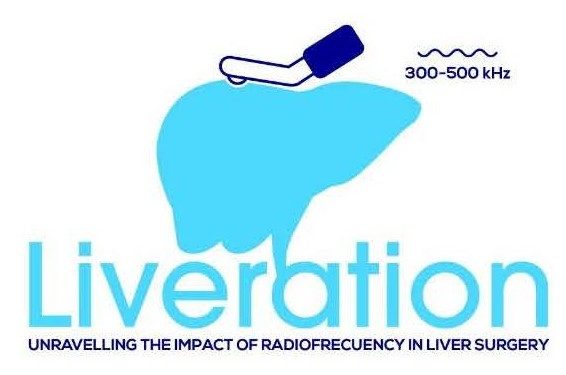
LIVERATION is a comprehensive, practical, and multinational clinical trial spanning six countries, with the objective of investigating if the enlargement of the ablated margin through radiofrequency can reduce the recurrence of Colorectal Cancer Liver Metastasis (CRLM) and enhance patient longevity.
Colorectal cancer (CRC) is the third most common tumour in men and the second in women, with an estimate of 1.9 million new cases worldwide (450K in Europe) and approximately 900,000 deaths in 2020. Hepatic metastases develop in approximately 50% of colorectal cancer cases.
The liver, in addition to being the most common site of metastases, is also the first and only area of spread in 30–40% of patients.Surgery is considered the gold standard treatment and the only potentially curative option for colorectal liver metastases (CRLM).
LIVERATION leverages a prospective pragmatic clinical trial coordinated by expert clinicians and surgeons on liver cancer that had achieved promising preliminary results: a reduction of cancer local recurrence by adding an additional coagulation of the margin (ACM) with radiofrequency (RF) ablation devices compared to conventional hemostatic techniques in a retrospective clinical trial.
The main aim of LIVERATION is to evaluate the real-world effectiveness of ACM after liver resection in order to decrease liver cancer recurrence through a pragmatic clinical trial.
Population: adult | Intervention type: therapeutic procedural
LIVERHOPE (SAFETY & EFFICACY)
LIVERHOPE (SAFETY & EFFICACY)
Efficacy of the combination of simvastatin plus rifaximin in patients with decompensated cirrhosis to prevent ACLF development: a multicenter, doubleblind, placebo controlled randomized clinical trial

The objective of the LIVERHOPE project is to evaluate a novel therapeutic strategy for patients with cirrhosis based on a combination of rifaximin and simvastatin, targeting the main pathophysiological mechanisms of disease progression , namely the impairment in the gut-liver axis and the persistent hepatic and systemic inflammatory response. This dual therapeutic approach is supported by preclinical data showing excellent and very promising results.
LIVERHOPE will include two randomized double-blind trials (LIVERHOPE SAFETY and LIVERSHOPE EFFICACY) to investigate safety, tolerability and efficacy of combination of simvastatin plus rifaximin in patients with decompensated cirrhosis in six EU countries (285 patients will be enrolled in two trials in Germany, France, Italy, Spain, The Netherlands, and the United Kingdom). The expected impact is to halt progression to acute-on-chronic liver failure, the main cause of death, to decrease complications of the disease, to reduce hospital re-admissions, to improve cost-effectiveness of therapy.
The aim of the LIVERHOPE SAFETY trial is to assess the safety and tolerability of oral administration of simvastatin plus rifaximin in patients with decompensated cirrhosis.
The aim of LIVERHOPE EFFICACY is to assess the efficacy of the combination of simvastatin plus rifaximin in patients with decompensated cirrhosis to prevent ACLF development.
Population: adult | Intervention type: therapeutic medicinal product
MACUSTAR
MACUSTAR
Dry age-related macular degeneration: Development of novel clinical endpoints for clinical trials with a regulatory and patient access intention
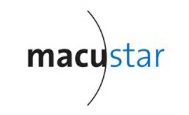
The major objective is to develop novel clinical endpoints for clinical trials with a regulatory and patient access intention in patients with intermediate age-related macular degeneration (iAMD). Additional objectives are to characterise visual impairment in iAMD and its progression, as well as identify risk factors for progression to late stage AMD.
Population: adult | Intervention type: non-interventional study
Publications
MENAC
MENAC
Multimodal Intervention for Cachexia in Advanced Cancer Patients Undergoing Chemotherapy
Cancer cachexia is a multi-factorial syndrome defined by an ongoing loss of skeletal muscle mass (with or without loss of fat mass) that cannot be fully reversed by conventional nutritional support and leads to progressive functional impairment. There is an urgency for improving management, but there is no consensus on the optimal treatment for cancer cachexia. Several single therapies for cancer cachexia have been examined in clinical trials, with disappointing overall results. As multiple factors are responsible for the development of cachexia, it has been argued that optimal cachexia interventions should target all components: multimodal therapy for a multimodal problem. The overall aim of this study is to early prevent the development of cachexia rather than treatment late in the disease trajectory. From a patient perspective a short term effect will be to improve physical and psychological function, to reduce symptom burden and to improve survival. In other words live a longer and better life during and after chemotherapy. Direct effects of the cachexia intervention are expected to be reduction of weight and muscle loss, and improved physical activity and quality of life.
Population: adult | Intervention type: therapeutic medicinal product
MORPHEUS
Prognosis improvement of unprovoked venous thromboembolism using personalised anticoagulant therapy

Venous thromboembolism (VTE) is a frequent and life-threatening disease. In 50% of cases, VTE occurs in the absence of any major risk factors (unprovoked VTE). In these patients, when anticoagulation is stopped after 3 months of anticoagulation, more than 35% will develop recurrent VTE. Consequently, international guidelines recommend to treat these patients “indefinitely”. However, such practice exposes them to a substantial increase risk of bleeding. Nevertheless, after several years of anticoagulation in all patients with unprovoked VTE, the risk of anticoagulant-related bleeding is expected to exceed the risk of recurrent VTE after stopping treatment.
In addition, extending anticoagulation indefinitely in all patients with unprovoked VTE exposes 65% of patients to an unjustified high risk of bleeding, who would never have experienced recurrent VTE after stopping treatment. In this setting, optimal duration and management of anticoagulation remains a pivotal and unresolved challenging issue which has the potential to markedly improve long-term prognosis of unprovoked VTE.
Based on quantitative and qualitative approaches, MORPHEUS will for the first time integrate (i) clinical, laboratory and imaging biomarkers (personalized medicine) and (ii) socio-anthropological markers (patient-centred model) into sets of prediction rules for optimizing anticoagulant management integrated in a shared decision-making process.
The ultimate goal of the European MORPHEUS project will be to develop and validate a time-dependent multi-component tool integrated in a shared decision-making process regarding anticoagulant treatment duration in patients with unprovoked VTE.
Population: adult | Intervention type: Non-interventional
NECESSITY
NECESSITY
NEw Clinical Endpoints in primary Sjögren’s Syndrome: an Interventional Trial based on stratifYing patients

Primary Sjögren’s syndrome (pSS) is a systemic autoimmune disease (AID) involving 0.5 to 3/1000 persons. The disease affects exocrine glands leading to dryness of the eyes and the mouth and is associated with fatigue and limb pain. In 30% to 50% of the patients, systemic and extra-glandular manifestations may develop. The spectrum of extra-glandular
manifestations in pSS is broad and includes vasculitis, peripheral neuropathy, synovitis, kidney involvement and interstitial lung disease. Moreover, pSS patients have a 10 to 20-fold higher risk of developing B cell lymphomas, conferring shorter lifetime expectancy to these patients.
Whereas 10 new targeted-immunomodulatory treatments have been marketed for rheumatoid arthritis in the past 20 years, only one drug has been licensed for other systemic AIDs, such as pSS and systemic erythematous lupus in the same period. There are several factors that may hamper the development of successful drugs for AID. Being multi-organ, these AIDs are considerably heterogeneous among individuals both in terms of clinical manifestations and biological disturbances, with, as a consequence, great difficulty to set-up accurate composite clinical end-points sensitive to change and usable in clinical trials. In this project, our objectives are:
- To develop and assess sensitive clinical endpoints, for use in future clinical trials, able to evaluate response to drug treatments in patients with pSS with high disease burden and/or systemic involvement,
- To identify and evaluate discriminative biomarkers for stratification of pSS patients predictive of organ involvement and disease progression and thus available for inclusion in clinical trials,
- To set-up and perform an original multi-arm multi-stage clinical trial to validate the newly defined pSS endpoints and the identified biomarkers, by maximizing the chance of finding a difference between the placebo arm and the treated arm.
Population: adult | Intervention type: therapeutic medicinal product
NICOFA
NICOFA
A randomized, double-blind, placebo-controlled, parallel-group, multicentre study of the efficacy and safety of nicotinamide in patients with Friedreich’s Ataxia
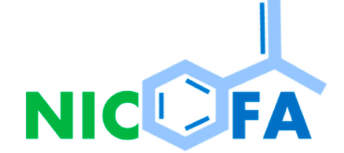
Friedreich ataxia is a rare incurable and devastating disease. The clinical phenotype includes poor balance, impaired coordination, difficult articulation of speech and swallowing, distal weakness, deep sensory loss, visual and hearing impairment, but also heart failure, diabetes mellitus, scoliosis and foot deformities. Clinical manifestation normally starts around puberty. There is no cure or treatment that can slow down the disease which frequently results in severe disability by early adulthood. Friedreich ataxia is an inherited disorder caused by Frataxin deficiency. Nicotinamide (vitamin B3) was identified to increase Frataxin expression by an epigenetic mechanism in patients with Friedreich ataxia. This multinational study NICOFA will investigate randomized, placebo-controlled and double-blinded, whether high doses of nicotinamide are an effective treatment for Friedreich ataxia over a study period of two years. Study design and duration and number of patients to be included are based on our natural history data obtained in EFACTS (European Friedreich’s Ataxia Consortium for Translational Studies).
Population: adult & paediatric | Intervention type: therapeutic medicinal product
NISCI
NISCI
Antibodies against Nogo-A to enhance plasticity, regeneration and functional recovery after acute spinal cord injury, a multicenter international randomized double-blinded placebo-controlled Phase II clinical proof

Spinal cord injury is a severe and devastating neurological disorder that leaves patients with permanent paralysis of the body. No treatment is available today to regenerate interrupted nerve fibers and repair the damaged spinal cord. The incidence of spinal cord injury is about newly injured 10’000 people per year in the EU, and due to an almost normal life expectancy more than 200’000 patients are living with a spinal cord injury in the EU. The impact on the individual quality of life is high, and social costs are enormous. Recent preclinical research in animal models succeeded to greatly enhance axonal sprouting, fiber regeneration and neuroplasticity following injuries of brain and spinal cord. These results warrant translation now to patients suffering from acute spinal cord injury. A previous phase I clinical study using intrathecal application of a nerve fiber growth promoting antibody against the growth inhibitory protein Nogo-A has shown in patients with complete spinal cord injury that this treatment is safe and well tolerated. The present study will enroll patients with various degrees of complete to incomplete acute spinal cord injury for a double-blind, placebo-controlled trial to test the efficacy of this antibody therapy to improve motor outcome and quality of life of tetraplegic patients. The enrollment of patients with different degrees of spinal cord injury is considered essential to reveal drug activity and eventual proof of concept in a broad patient population. Advancements in clinical trial design, improved prediction algorithms of clinical outcomes and development of surrogate markers (in cerebro-spinal fluid/serum and by neuroimaging) will allow for scrutinizing the effectiveness of this novel treatment in an unprecedented way. A positive outcome of this trial will represent a breakthrough for the future therapy of spinal cord injuries and beyond (traumatic brain injury, stroke, multiple sclerosis).
Population: adult | Intervention type: therapeutic medicinal product
ORTHOUNION
ORTHOUNION
A multi-centre, open-label, randomized, comparative clinical trial of two different doses of bone marrow autologous human mesenchymal stem cells plus biomaterial versus iliac crest autologous graft, for bone healing in non-union after long bone fractures

This clinical trial involves two comparative analyses:
Comparison of efficacy in terms of superiority of hBM-MSCs + biomaterial (both experimental arms, low and high doses) versus iliac crest autologus graft (active comparator arm). The principal endpoint is bone consolidation at one year, defined as a combination of clinical and radiological improvements: radiological consolidation (considered as a new bone formation across the fracture site visible in 3/4 cortices, on at least 3/4 views, qualitative analysis) without pain (with and without weight bearing) and without further reoperation in the callus site.
Comparison of efficacy in terms of non-inferiority (target delta of 0.10 points) of low dose hBM-MSC+Biomaterial versus high dose of hBM-MSC+Biomaterial. The principal endpoint is the radiological consolidation, measured in a scale from 0 to 1, considering the mean consolidation of 0.6875 points (quantitative analysis).
Population: adult | Intervention type: therapeutic medicinal product
OTBB3
OTBB3
Oxytocin Treatment in neonates and infants (BaBies) with Prader-Willi syndrome: effects of intranasal administrations of oxytocin in infants aged from 0 to 3 months vs. placebo on sucking and swallowing (phase III clinical trial)
Prader-Willi syndrome (PWS) is a rare chronically debilitating and life-threatening disease without efficient treatment. It is a genetic neurodevelopmental disorder with neonatal poor feeding, requiring nasogastric tube feeding, and social skills followed by early onset of obesity, severe behavioural disturbances and comorbidities. Pre-clinical data supported the hypothesis that OXT rescues early phenotype and modifies the course of the disease via its potential neuromodulation effect, if administered in a post-natal short window of opportunity. This is a European phase III randomised double-blind placebo trial, already approved by EMA, evaluating the effects of early intranasal OXT in PWS neonates/infants. This trial is coordinated by Pr M Tauber (France) and sponsored by the Centre Hospitalier Universitaire de Toulouse will be conducted in 5 European countries (France, Belgium, Italy, Netherlands, and Germany).
Population: paediatric | Intervention type: therapeutic medicinal product
PAPA-ARTIS
PAPA-ARTIS
Paraplegia Prevention in Aortic Aneurysm Repair by Thoracoabdominal Staging with ‘Minimally-Invasive Segmental Artery Coil-Embolization’: A Randomized Controlled Multicentre Trial
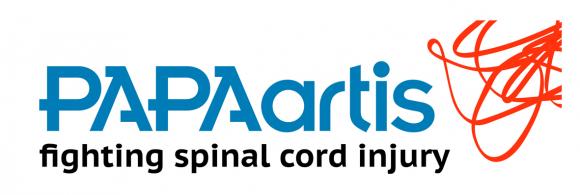
PAPA-ARTIS is a phase II trial to demonstrate that a staged treatment approach can reduce paraplegia and mortality dramatically. It can be expected to have both a dramatic impact on the individual patient's quality of life if saved from a wheelchair, and also upon financial systems through savings in; 1) lower costs in EU health care; 2) lower pay-outs in disability insurance (est. at 500k in Year 1), and; 3) loss of economic output from unemployment. Approx. 2500 patients a year in Europe undergo these high risk operations with a cumulative paraplegia rate of over 15%; therefore >100M per year in costs can be avoided and significantly more considering the expected elimination of type II endoleaks.
Population: adult
POEM VS LHM
POEM VS LHM
Endoscopic Versus Laparoscopic Myotomy for Treatment of Idiopathic Achalasia: A Randomized, Controlled Trial (POEM rcpmt)
Achalasia is a rare esophageal disorder which is characterized by a loss of esophageal motoneurons and impaired gastrointestinal peristalsis and food transit. Peroral Endoscopic Myotomy (POEM) is a new endosurgical technique for achalasia in which a surgical myotomy is created using a flexible endoscope through the mouth, completely avoiding any skin incisions. The aim of this study is to compare short and long-term feasibility, safety and efficacy of endoscopic (POEM) with laparoscopic myotomy (Heller myotomy) in the treatment of achalasia.
Intervention type: therapeutic procedural
POPART
POPART
Prophylactic oropharyngeal surfactant for preterm infants: a randomised trial

Premature babies are at high-risk of respiratory failure due to respiratory distress syndrome (RDS). Surfactant given into the trachea is an effective treatment for infants who are intubated for RDS. Endotracheal intubation is difficult and is associated with adverse effects. A strategy of supporting premature newborns with continuous positive airway pressure (CPAP) and reserving intubation and surfactant for those who develop respiratory failure despite CPAP yields better results than intubating all infants for surfactant. However, nearly half of infants managed with CPAP are ultimately intubated for surfactant.
We will establish whether giving preterm infants surfactant into their oropharynx at birth, with the intention that they aspirate it, reduces the rate of intubation in the first 5 days of life.Infants born before 29 weeks gestation will be eligible for inclusion in this multi-centre randomised trial. Written informed consent will be obtained before delivery. Infants will be randomly assigned to receive oropharyngeal surfactant immediately at birth in addition to CPAP or standard care with CPAP alone. Caregivers will not be masked to group assignment.
Randomisation will be stratified by centre and gestation at birth (<26 weeks; 26-28 weeks). Primary outcome of the study is intubation for respiratory failure in the first 120 hours of life. Enrolled infants will be intubated for persistent apnoea and/or bradycardia in the delivery room (DR), or for respiratory failure in the neonatal intensive care unit (NICU) defined as ≥ 2 of worsening clinical signs; acidosis; oxygenation – FiO2 > 0.4; hypercarbia; or apnoea treated with mask ventilation. To demonstrate a reduction in the rate of the primary outcome from 48% in the control group to 26% with oropharyngeal surfactant with 80% power and a = 0.05, we need to recruit 250 infants. Adverse events will be recorded and measure secondary outcomes of clinical interest (rate of DR intubation; duration of ventilation and respiratory support; rate of bronchopulmonary dysplasia at day 28 and chronic lung disease at 36 weeks’ corrected age; mortality before hospital discharge). All outcomes will be determined at or before hospital discharge; this duration will vary according to clinical course [e.g. for 1 day (for participants who die shortly after enrolment) to several months]. Poractant alpha (Curosurf, Chiesi Farmeceutici, Parma, Italy) is a natural surfactant prepared from porcine lungs. It is approved for endotracheal use for prevention and/or treatment of RDS in premature infants. It is currently not licensed for oropharyngeal administration, therefore we will examine the off-label use of a licensed product. It is a randomised, parallel group, controlled Phase III trial.
Population: paediatric | Intervention type: therapeutic medicinal product
PRECARDIA
PRECARDIA
PREclinical Mutation CARriers From Families With DIlated Cardiomyopathy and ACE Inhibitors
This is a multicentre European double-blind, randomized and controlled trial with 2 parallel groups (1 study medication, 1 placebo) in order to analyse the impact of ACE inhibitors (ACEi) in subjects who carry a mutation but have not yet developed DCM (dilated cardiomyopathy). Objective of the trial: Study the impact of ACE inhibitors (ACEi) in subjects who carry a mutation (leading to a genetic form of heart failure) but have not yet developed DCM.
Population: adult | Intervention type: therapeutic medicinal product
PRECIOUS
PRECIOUS
Prevention of Complications to Improve Outcome in Elderly Patients with Acute Stroke

Elderly patients have a high risk of complications after stroke, such as infections or fever. This study aims to assess whether preventive treatment in the first four days of hospitalisation with ceftriaxone, paracetamol, and/or metoclopramide prevents the most common complications and reduce the risk of death or long-term disability compared to standard care alone.
Population: adult | Intervention type: therapeutic medicinal product
Publications
PreCoDe
A randomised, double-blind, placebo-controlled, 104-week proof-of-concept study to evaluate the efficacy of intravenous Prasinezumab in participants with Parkinson’s disease carrying a severe mutation in the GBA gene (Prevent Cognitive Decline in GBA)
PreCoDe is a proof-of-concept trial to investigate the efficacy of prasinezumab to slow or prevent cognitive decline in people with Parkinson's disease carrying a severe mutation in the GBA (glucocerebrosidase) gene
Prevent Cognitive Decline in GBA-associated Parkinson's Disease (PreCoDe)
This is a proof-of-concept trial to investigate the efficacy of prasinezumab to slow or prevent cognitive decline in people with Parkinson's disease carrying a severe mutation in the GBA (glucocerebrosidase) gene. The duration of the intervention per patient will be 104 weeks with monthly infusions. The investigators plan to enroll 120 participants (60 participants per treatment arm). This study will be conducted across Europe in the following countries: France, Germany, Italy, Luxembourg, Spain, Sweden, UK.
The primary objective of the study is to assess if the group treated with Prasinezumab declines less in cognitive function measured by the Parkinson Disease Cognitive Composite Score (PDCCS) as compared to the Placebo group.
Population: 35 Years to 80 Years (Adult, Older Adult) | Study type: Interventional, Clinical Trial under the EU Clinical Trials Regulation
Drug: Prasinezumab | Funding information: Michael J. Fox Foundation for Parkinson’s Research
PROACT EU-Response
PROactive Adaptive Clinical Trials network in EU-Response
The overall aim of the PROACT EU-Response project is to prepare Europe for future diseases of epidemic or pandemic potential by strengthening and building upon existing networks of experts and civil society focused on clinical therapeutic platform trials within hospital inpatient settings across Europe.
This network will provide the capacity to pivot rapidly in the event of an outbreak to implement large, multi-country platform trials investigating drug efficacy and performance of diagnostic tools, with a strong patient and public involvement. The civil society and community at large are engaged in the planning of the trials as well as in designing specific activities concerning communication and information for the public about health threats and how to avoid disinformation, particularly during an epidemic or pandemic.
This project is led by ANRS-MIE, Inserm and Sorbonne University, as part of a consortium of 20 European countries and 23 partners, including many teams in biostatistics, clinical research and social sciences, as well as numerous associations and citizens' groups.
Population: adult | Intervention type: Interventional Study
PROOF
PROOF
Penumbral Rescue by Normobaric O=O Administration in Patients With Ischaemic Stroke and Target Mismatch ProFile: A Phase II Proof-of-Concept Trial

The PROOF project now seeks to demonstrate that NBHO (high-flow 100% oxygen at >45 L/min via a non-rebreather mask, or FiO2=1.0 for intubation/ventilation) reduces infarct growth from baseline to 24 hours compared to standard treatment if administered at 3 hours after onset of anterior circulation IS, in patients with proximal vessel occlusion and salvageable tissue at risk. The study is multi-center, adaptive phase-IIb, randomized, open-label with blinded-endpoint (PROBE design).
The primary efficacy criterion will be infarct growth from baseline to 24 hours. Secondary endpoints will be NIHSS 24h, categorical shift in the pre-stroke modified Rankin Score, QoL and cognition at day 90. Potential surrogate biomarkers, health economics and societal impacts will be assessed. If NBHO proves its neuroprotective potential in this selected population, phase-III trials in all IS patients may be undertaken. Considering its low costs and ease of use, NBHO may impact stroke care worldwide.
Population: adult | Intervention type: therapeutic medicinal product
R-LINK
R-LINK
Optimizing response to Li treatment through personalized evaluation of individuals with bipolar I disorder: the R-LiNK initiative

The objective of this study is to identify the eligibility criteria for treatment with Li in BDI in terms of response, safety and tolerability.
Population: adult | Intervention type: therapeutic medicinal product
RESCUE ESES
RESCUE ESES
A Randomized European trial of Steroids versus Clobazam Usage for Encephalopathy with Electrical Status Epilepticus in Sleep
The aim of this study is to establish which treatment is best for children with Electrical Status Epilepticus in Sleep (ESES) syndrome, by treating 130 children with ESES syndrome with steroids (inflammation inhibitors) or clobazam and evaluating change in cognitive functioning after 6 and 18 months.
Intervention type: therapeutic medicinal product
RESPINE
RESPINE
REgenerative therapy of intervertebral disc: a double blind phase 2b trial of intradiscal injection of mesenchymal stromal cells in degenerative disc disease of the lomber SPINE unresponsive to conventional therapy
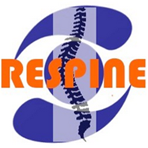
The primary outcome of this trial is to evaluate the effectiveness of intradiscal injection of bone marrow mesenchymal stromal/stem cells (BM-MSCs) in reducing chronic lower back pain (LBP) using the visual analog scale (VAS) and functional status (Oswestry scale) after 12 months of treatment, defining responders in case of at least 20% improvement in VAS or Oswestry scale at month 12 compared to a baseline with absolute change of 20 mm on a 100 mm scale.
Population: adult | Intervention type: therapeutic medicinal product
SABATO
SABATO
Staphylococcus Aureus Bacteremia Antibiotic Treatment Options
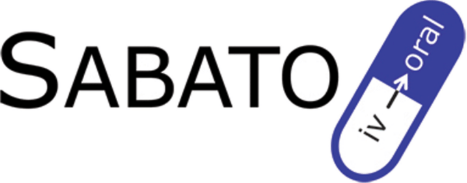
In a multicenter, open-label, randomized controlled trial we aim to demonstrate that an early switch from intravenous to oral antimicrobial therapy is non-inferior to a conventional 14-days course of intravenous therapy regarding efficacy and safety. An early switch from intravenous to oral therapy would provide several benefits such as earlier discharge, fewer adverse reactions associated with intravenous therapy, increased quality of life, and cost savings.
Population: adult | Intervention type: therapeutic medicinal product
SafeBoosC
SafeBoosC
SafeBoosC - Safeguarding the Brain of Our Smallest Children - an Investigator-initiated Randomised, Blinded, Multinational, Phase II Feasibility Clinical Trial on Near-infrared Spectroscopy Monitoring Combined With Defined Treatment Guidelines Versus Standard Monitoring and Treatment as Usual in Premature Infants
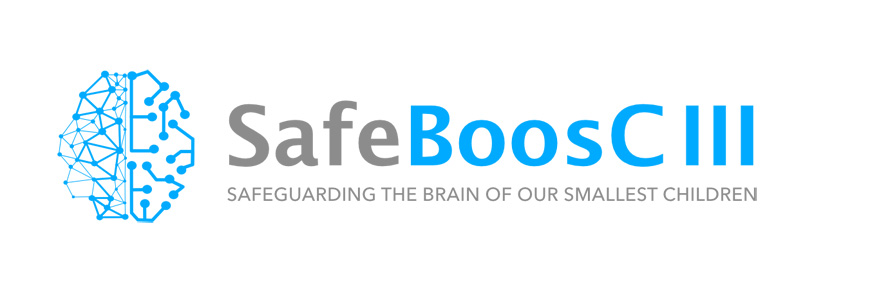
The primary objective of the SafeBoosC trial is to examine if it is possible to stabilise the cerebral oxygenation of extremely preterm infants during the first 72 hours of life through the application of cerebral NIRS oximetry and implementation of an rStO2-specific clinical treatment guideline. We hypothesise that by using the specified treatment guideline to respond to cerebral monitoring readings outside the target range, we would reduce the burden of hypo- and hyperoxia and consequently reduce brain injury.
This is an investigator-initiated randomised, blinded, multinational, phase II feasibility clinical trial involving preterm infants from 12 European countries.
Intervention type: diagnosis
Publications
SCD-WELL
SCD-WELL
A Randomized Multicenter Clinical Trial in Patients with Subjective Cognitive Decline At Risk for Alzheimer's Disease to Assess the Short-term Effects of a Standardized Meditation Intervention vs. Active Control on Behavioral Measures

As the number of older people in Europe grows, increasing healthy life years is a priority. Cognitive decline, dementia (e.g. Alzheimer’s disease, AD), sleep disturbances and depression, all related to psychological distress and anxiety, are significant drivers of reduced quality of life in older adults. This study is part of a project that builds on evidence that lifestyle factors and meditation practice have the potential to downregulate these adverse factors and positively impact mental and neurological conditions including AD. In particular, the study aims to assess the short-term effects of an eight-week meditation intervention (versus cognitive training) in patients with subjective cognitive decline at risk for AD on behavioural measures including anxiety and wellbeing.
Population: adult | Intervention type: therapeutic medicinal product
SECURE
SECURE
Secondary Prevention of Cardiovascular Disease in the Elderly Trial

The purpose of this study is to evaluate the efficacy of a polypill strategy containing aspirin (100 mg), ramipril (2.5, 5 or 10 mgs), and atorvastatin (40 mgs) compared with the standard of care (usual care according to the local clinical practices at each participating country) in secondary prevention of major cardiovascular events (cardiovascular death, nonfatal myocardial infarction, nonfatal ischemic stroke, and urgent revascularization) in elderly patients with a recent myocardial infarction.
Population: adult | Intervention type: therapeutic medicinal product
SeeMyLife
SeeMyLife
Holistic mixed approaches to capture the real life of children with Rare Eye Diseases
In Europe, Rare Eye Diseases (RED) are the leading cause of severe visual impairment/blindness (SVI/B) in children. This sensory disability with its accompanying psychological distress hugely impacts their lives and their families. Understanding this impact is key in care, shared decision making, developing therapies, and improving social integration. However, current tools to evaluate vision related quality of life (VR-QoL) disregard age and cultural differences, while we lack knowledge on what aspects of this impact are important at the individual child’s level. Instruments capable of yielding high-quality data, with broad applicability and regulatory compliance, remain to be developed.
SeeMyLife convenes a multidisciplinary team from 6 EU countries to generate data on the experience of these children. We will combine quantitative (QUAN) and qualitative (QUAL) data in a mixed methods research framework. QUAN data will be generated using standardized, validated VR-QoL questionnaires. QUAL data will be generated from a socio-anthropologic study including semi-directive interviews to address how their disability affects lives. The conclusions of the QUAN study, comparable across several countries, will be reinforced by the richness of the individual data collected during the QUAL study.
SeeMyLife will provide tools for RED children/teenagers’ self-report which will be used in clinical care and research as a new European standard, and the long-awaited knowledge about the patient’s position within his/her own life course and within his/her family and healthcare actors.
Population: paediatric | Intervention type: therapeutic medical device
SESAME
SESAME
Safety and Effectiveness of SOFIA™/SOFIA™ PLUS when used for direct aspiration as a first line treatment technique in patients suffering an Acute Ischemic Stroke in the anterior circulation
Sesame is a European, multi-center, single arm, prospective, observational registry.
Sesame aims to demonstrate that use of SOFIA™/SOFIA™ PLUS catheter for direct aspiration as a first line treatment technique is fast, safe and effective in patients suffering an Acute Ischemic Stroke when assessed at 24 hours, discharge and 90 days after treatment. 250 patients will be enrolled. All patients will be followed for 90 days or until death.
Population: adult | Intervention type: therapeutic medical device
STRONG TREAT
STRONG TREAT
Multiple Versus Single Dose of Ivermectin for the Treatment of Strongyloidiasis
Ivermectin is currently the best drug to cure strongyloidiasis, but the standard single dose of 200 mcg/kg is probably not enough to guarantee a cure. As strongyloidiasis can be fatal in immunosuppressed patients, it is mandatory to define the optimal dosage to eradicate the parasite. The aim of this study is to define the most effective dose schedule of ivermectin to cure strongyloidiasis.
Population: adult | Intervention type: therapeutic medicinal product
SWEET
SWEET
Sweeteners and sweetness enhancers: Impact on health, obesity, safety and sustainability

The overall aim of the randomised controlled trial SWEET (S&SEs: Prolonged effects on health, obesity and safety) is to investigate the efficacy and safety of combined (foods and drinks) and prolonged use of S&SEs—as part of a whole healthy ad libitum diet approach—in a population of overweight adults and children. The two primary outcomes on efficacy and safety will be assessed in adults by 1-year changes in body weight and 1-year changes in gut microbiota related to metabolic health outcomes, respectively. Secondary objectives concern effects on obesity-related risk factors such as fat mass, glucose metabolism and lipidemia as well as safety aspects such as allergenicity. Other outcomes include appetite sensations, food cravings, food preferences and preference for sweet taste.
Population: adult & paediatric | Intervention type: therapeutic medicinal product
Publications
TB-MED – BIOCERAMED
TB-MED – BIOCERAMED
Prospective Multicenter Observational Study on the use of NEOCEMENT ® for the Treatment of Bone DefectsRegistry-based study
This study is a post-market, multicenter, prospective, single arm observational registry that aims to collect performance and safety clinical data of NEOCEMENT (CE marked device) in the treatment of bone defects as part of routine clinical practice. The results of the Clinical Investigation shall be used as clinical evidence for clinical evaluation of the device aiming for submission to the new Medical Device Regulation (EU) 2017/745. This protocol does not include any new intended uses, new populations, new materials or design changes.
Population: adult | Intervention type: non-interventional medical device
TENSION
TENSION
Efficacy and Safety of Thrombectomy in Stroke With Extended Lesion and Extended Time Window

TENSION is a prospective, open label, blinded endpoint (PROBE), European two-arm, randomized, controlled, post-market study to compare the safety and effectiveness of endovascular thrombectomy as compared to best medical care alone in the treatment of acute ischemic stroke patients with extended stroke lesions defined by an Alberta Stroke Program Early CT Score (ASPECTS) score of 3-5 and in an extended time window (up to 12 hours or unknown time of symptom onset). Up to 714 subjects will be randomized. Primary endpoint will be functional outcome assessed by the modified Rankin scale at 90 days post-stroke ("mRS shift analysis"). By this, TENSION will provide evidence of efficacy and safety of thrombectomy in an acute stroke population with uncertain benefit of endovascular stroke treatment.
Population: adult | Intervention type: therapeutic medical device
TERIS
TERIS
Multi-center, randomized, double-blinded study of Teriflunomide® in radiologically isolated syndrome (RIS)
Purpose: To prospectively study the efficacy of Teriflunomide in extending the time to a seminal acute or progressive demyelinating event in a cohort of RIS subjects.
Rationale: RIS subjects are frequently exposed to disease modifying therapies despite the lack of scientific literature supporting the use of such treatments. Earlier treatment intervention may extend the time to the first acute or progressive clinical event resulting from CNS demyelination and reduce radiological progression. In addition, early treatment may result in more profound effects on reducing disability progression long-term.
Primary outcome: The primary outcome measure for this trial is the time to the first acute or progressive neurological event resulting from CNS demyelination.
Population: This study will include RIS subjects from the Europe who fulfill 2009 RIS Criteria.
Population: adult | Intervention type: therapeutic medicinal product
TINN
TINN
Fluconazole Versus Micafungin in Neonates with Suspected or Culture-Proven Candidiasis
This study is designed to determine whether micafungin is as efficacious as the current standard of fluconazole, to compare the safety of the two drugs in the treatment of proven neonatal candidiasis.
It is also designed to further elucidate the pharmacokinetics of the two products in the growing and developing neonate and premature infant.
Intervention type: therapeutic medicinal product
TINN2
TINN2
Treat Infection in NeoNates 2

The aim of the TINN2 study is to evaluate the efficacy of azithromycin in prevention of bronchopulmonary dysplasia in preterm neonates.
The aim of TINN2 is to evaluate azithromycin, included in the EMEA priority list of the therapeutic areas that need specific drug evaluation in preterm and term neonates. Azithromycin is a macrolid antibiotic with anti-inflammatory properties active against Ureaplasma. It might be effective in reducing the severity of bronhopulmonary disease in which Ureaplasma infection and inflammation play a role. TINN2 involves European leaders in neonatology, paediatric pharmacology, methodology and SMEs that will establish links with ethical bodies and regulatory authorities. The programme will perform in silico experiments and evaluate formulations for neonates.
The randomized placebo-controlled trial will be optimized using age-appropriate state-of-the-art methods adapted to neonates (including in silico experiments, pharmacokinetics and pharmacogenetics) to validate the components of a Paediatric Investigation Plan. It will be performed by neonatologists trained in paediatric pharmacology and clinical research in line with guidelines on Good Clinical Practice. All the ethical issues will be considered, including pain and distress, blood sampling (number and volume) and informed consent.
Parent information sheets and consent form will be submitted to parents’ associations for approval. TINN2 will include short term safety and potential for long term adverse reactions. Results will be reported in order to allow a PUMA application and to improve neonatal care. Therefore, TINN2 will validate the appropriate use of azithromycin in neonates which will be of direct benefit to children, their families and health professionals. TINN2 will strengthen paediatric drug evaluation across Europe, support recent initiatives from the European pharmaceutical industry and build up a network of units with experience in clinical research that will be used for additional drug evaluation in neonates.
Intervention type: therapeutic medicinal product
TRANSEURO
TRANSEURO
Neural Transplantation in the Treatment of Patients with Parkinson's Disease

There are currently no cures for Parkinson's disease (PD) but one of the most effective reparative therapies in patients to date has been with allotransplants of dopamine (DA) neuroblasts obtained from fetal ventral mesencephalic (VM) tissue. However, this cell transplantation approach has given inconsistent results, with some patients doing extremely well and coming off anti-PD medication for years, whilst others have shown no or only modest clinical improvements, and in some cases also developed severe, off-state graft-induced dyskinesias (GIDs). The reasons behind this heterogeneity of outcomes, and the emergence of GIDs in particular, need to be better understood, not least in the perspective of the rapid advances that are now being made in the development of stem-cell based therapies. There is therefore an urgent need to revisit the trials that have already been done with fetal VM tissue in PD patients, with the expectation that a critical reassessment can form the basis for an optimised and more standardised procedure that will translate into more consistently efficacious transplants with minimal side-effects. Over the last two years a group of international experts, including the key investigators of the previous European and North American trials, has been re-examining the outcome of these trials as well as reviewing the results obtained from recent and ongoing animal experimental studies, and identified a number of weaknesses that may explain the inconsistent outcome in previous trials. As a result of these discussions, the group has agreed to join forces in a new round of experimental work and cell therapy trials in PD, based on a new jointly developed protocol where all these factors are taken into account. In the first instance fetal VM tissue containing mesencephalic DA neuroblasts will be used, with the expectation that this will pave the way for bigger trials using dopaminergic neurons derived from stem cells.
Population: adult | Intervention type: therapeutic medicinal product
TREOCAPA
TREOCAPA
Prophylactic treatment of the ductus arteriosus in preterm infants by acetaminophen Study type

To define an optimal dosage of intravenous acetaminophen to close DA in EPI and thereafter to evaluate the consequence of early prophylactic acetaminophen treatment on mortality/morbidity at 36 weeks (w) of postconceptional age (PCA).
Population: paediatric | Intervention type: therapeutic medicinal product
TRIHEP 3
TRIHEP 3
A Comparative Phase 2 Study Assessing the Efficacy of Triheptanoin, an Anaplerotic Therapy in Huntington's Disease
Huntington's disease is an autosomal dominant disease characterised by movement disorders and cognitive and neuropsychiatric disturbances. The clinical features usually emerge between 30 and 50 years of age and there is currently no curative treatment. Brain energy deficiency plays an important role in the pathophysiology of the disease. This study asks whether the administration of triheptanoin can effectively improve Huntington's disease as assessed by MRI, in vivo spectroscopy and clinical evaluation.
Population: adult | Intervention type: therapeutic medicinal product
TRISS
TRISS
Transfusion Requirements in Septic Shock
Patients with blood poisoning - sepsis - often receive blood transfusions in the intensive care unit. The evidence that blood transfusion leads to improved outcome is limited and the blood may be harmful to some of these patients. To bridge the gap between clinical practice and evidence, a large randomised clinical trial is needed to document the efficacy and safety of RBC transfusion in these very sick patients.
Population: adult | Intervention type: therapeutic medicinal product
Publications
TTM
TTM
Target Temperature Management After Cardiac Arrest
Therapeutic hypothermia is recommended for unconscious survivors of out-of-hospital cardiac arrest. Are there differences in mortality, neurological function and adverse events between a target temperature management at 33°C and 36°C for 24 hours after cardiac arrest?
Population: adult | Intervention type: therapeutic medicinal product
Publications
TTV Guide IT
TTV Guide IT
A randomised and controlled trial to compare the safety, tolerability and preliminary efficacy between standard and Torque Teno virus-guided immunosuppression in stable adult kidney transplant recipients with low immunological risk in the first year after
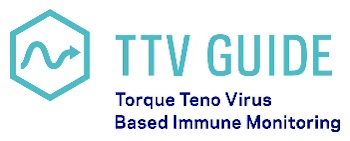
End stage renal disease (ESRD) causes high socioeconomic burden for citizens and the healthcare system in Europe. Kidney transplantation represents the treatment standard for ESRD. Graft rejection due to inadequate immunosuppression is the leading cause for chronic graft dysfunction and infectious disease due to reduced immune function is a major cause of death. Optimisation of immunosuppressive drugs is a crucial step to minimize the risk of infection and rejection and thereby prolonging patient and graft survival.
The peripheral blood copy number of the highly prevalent and non-pathogenic Torque Teno virus (TTV) is associated with the grade of the immunosuppression of the host. Non-interventional studies suggest superiority of TTV copy number guided immunosuppression compared to standard strategies.
To demonstrate the safety and preliminary efficacy of TTV-guided dosing of immunosuppressive drugs in kidney transplant recipients, a phase II clinical trial comparing infection and rejection rate between TTV-guided immunosuppression and the clinical routine strategy.
TTV allows for a comprehensive and personalised assessment of the function of the immune system. For the first time this novel and original approach will be tested in an interventional randomised and controlled setting.
The proposed project has the potential to reduce infection and graft rejection by 20% thereby significantly improving graft and patient survival of kidney transplant patients. The improved survival will reduce healthcare costs by ~€ 50 million in the EU per year. The project will serve as a proof-of-concept for TTV-based assessment of the immune system, with potential applications in solid organ transplantation, autoimmune and infectious disease and oncology.
The TTV Guide project also built information videos and information regarding the consent process and ethical legal social implication study that is integrated into the TTV Guide IT clinical trial.
Population: adult | Intervention type: therapeutic medical device
VISION-DMD
VISION-DMD
A Phase IIb Randomized, Double-blind, Parallel Placebo- and Active-controlled Study to Assess the Efficacy and Safety of VBP15 in Ambulatory Boys with Duchenne Muscular Dystrophy (DMD)

VISION-DMD (Phase 2 Clinical Trials of VBP15: An Innovative Steroid-like Intervention on Duchenne Muscular Dystrophy, DMD) is a Phase 2a and 2b randomised, double-blind, parallel placebo- and active-controlled study. It will assess the safety and toxicity (phase 2a) and safety and efficacy (phase 2b) of the orphan drug VBP15 in ambulatory boys with Duchenne muscular dystrophy (DMD), a rare recessive X-linked form of muscular dystrophy. Funded by Horizon 2020 and the sponsor, Reveragen Biopharma Limited, the project aims to advance clinical development of VBP15 as a new therapy to revolutionise care for all patients with DMD by 2020. The study will be carried out over 18 to 24 months in approximately 15 countries and 30 international study sites. The phase 2a study will be conducted at approximately 10 U.S. study sites. The phase 2b study, supported by ECRIN, will be conducted at approximately 30 international study sites in 14 different countries (UK, France, Italy, Spain, Belgium, Netherlands, Denmark, Sweden, Switzerland, Poland, Czech Republic, Turkey, Israel, and Australia).
The trial is ongoing but ECRIN's involvement ended in 2019.
Population: paediatric
WE Study
WE Study
Walking Easier with cerebral palsy

Cerebral palsy (CP) results from a lesion to the brain that occurs before or around birth, and it is the most common cause of physical disability in childhood. Approximately 70% of children with CP are able to walk, but experience varying degrees of restrictions related to this function. In children with CP, walking speed is reduced, balance is impaired and energy cost during walking is increased. Consequently, children with CP are less active and restricted in social participation compared to their peers. During the last two decades, targeted muscular injections of botulinum toxin A (BoNT-A) have become the standard treatment to reduce spasticity with the intention to make walking easier in order to facilitate the children's activity level and participation. Treatment with BoNT-A is mainly offered to children. Already at the age of 6 years, approximately 60% of the Norwegian children with CP have been treated with BoNT-A; mainly in the lower limbs. The evidence for a functional effect is surprisingly limited, despite the fact that this drug has been used for 20 years. The drug is expensive not only in terms of drug expenses, but also personal costs as well as the costs for the patients and their families. The objective of the study is to evaluate whether injections of BoNT-A in the calf muscles (mm.gastrocnemius and soleus) make walking easier in children/adolescents with CP within a time span of 6 months, and to evaluate whether an improvement in energy cost during walking is associated with increased daily activity, increased walking capacity, less pain and perceived improved performance and satisfaction. It is a double blinded placebo controlled randomized parallel-group design Phase IV study. This study cordinated by Professor Torstein Vik and sponsored by St. Olavs University Hospital, Trondheim Norway. Study will be conducted in three european countries (Norway, Poland and France).
Population: paediatric


